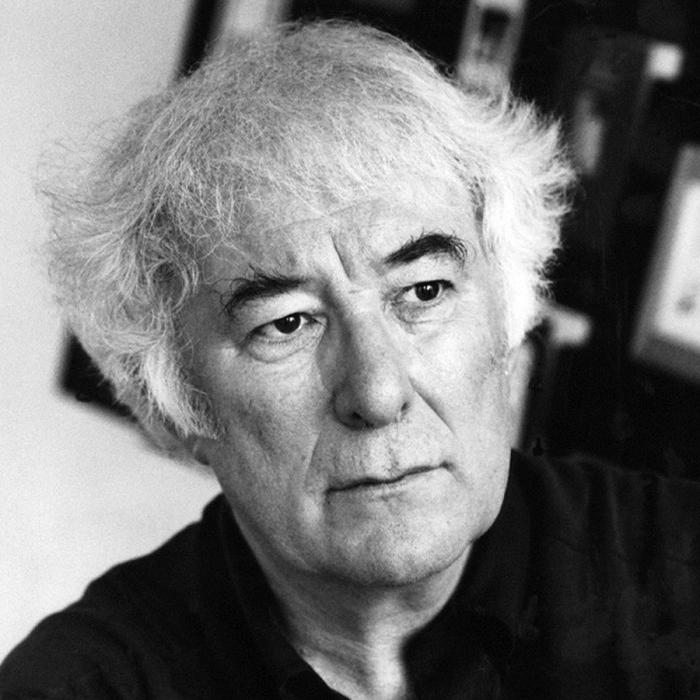The gravel walks by seamus heaney – Seamus Heaney’s “The Gravel Walks” is a profound and evocative poem that explores the complex interplay between memory, time, and personal and cultural identity. Through vivid imagery and symbolism, Heaney creates a multi-layered work that resonates with readers on a deeply personal level.
The poem’s central motif is the gravel walks, which serve as a symbol of both personal and collective memory. Heaney’s use of sensory details, particularly the tactile and auditory qualities of the gravel, creates a vivid and evocative description that transports the reader into the poem’s setting.
Poem Overview

Seamus Heaney’s “The Gravel Walks” explores themes of memory, time, mortality, and personal and cultural identity through the imagery of gravel walks, evoking a sense of the past and the inevitability of change.
Narrative and Structure
The poem consists of five stanzas, each focusing on a different aspect of the gravel walks. The first stanza introduces the gravel walks as a symbol of memory and the past, while the second and third stanzas explore the relationship between nature and memory, and the passage of time, respectively.
The fourth stanza reflects on the inevitability of death, and the final stanza offers a sense of closure and acceptance.
Imagery and Symbolism: The Gravel Walks By Seamus Heaney

Significance of the Gravel Walks, The gravel walks by seamus heaney
The gravel walks are a central symbol in the poem, representing both personal and collective memory. The gravel’s rough texture evokes a sense of the past, while its ability to retain footprints suggests the enduring nature of memory. The walks also serve as a metaphor for the journey of life, with each step forward representing a new experience or memory.
Sensory Details
Heaney employs vivid sensory details to create a rich and evocative description of the gravel walks. The “crunching” sound of the gravel underfoot and the “damp smell” of the earth evoke a sense of the physicality of the walks, while the “faint scent of hawthorn” and the “song of the blackbird” connect them to the natural world.
Nature and Memory
The poem explores the close relationship between nature and memory. The gravel walks are situated in a natural setting, surrounded by trees and flowers. This setting suggests that memory is not something that is separate from the physical world, but rather something that is embedded in the landscape.
Gravel Walks as a Symbol of Memory
The gravel walks themselves become a symbol of this connection between nature and memory. The footprints that are left in the gravel are a physical reminder of the people who have walked there before, and the memories that they have left behind.
Time and Mortality
The poem also explores the themes of time and mortality. The gravel walks are a reminder of the passage of time, as they are constantly changing and eroding. The footprints that are left in the gravel are a reminder of the people who have come and gone, and the inevitability of death.
Reflection on Death
The fourth stanza of the poem reflects on the inevitability of death. The speaker imagines his own death, and the gravel walks becoming a symbol of his own mortality. However, the poem ends on a note of acceptance, as the speaker comes to terms with the fact that death is a natural part of life.
Language and Form
Rhythm and Rhyme Scheme
Heaney uses a regular rhythm and rhyme scheme in the poem, which helps to create a sense of unity and coherence. The poem is written in iambic pentameter, with a rhyme scheme of ABAB CDCD EFEF GG.
Diction
Heaney’s diction is precise and evocative. He uses a combination of simple and complex language, which helps to create a sense of both intimacy and distance. The poem is also rich in sensory imagery, which helps to create a vivid and memorable impression of the gravel walks.
Personal and Cultural Identity
Connection to Irish Landscape and History
The poem also explores themes of personal and cultural identity. The gravel walks are located in Ireland, and the poem is filled with references to Irish history and culture. The speaker’s own experiences are intertwined with the history of his country, and the poem suggests that personal identity is shaped by both individual and collective experiences.
Questions Often Asked
What is the central theme of “The Gravel Walks”?
The central theme of “The Gravel Walks” is the exploration of memory, time, and personal and cultural identity.
How does Heaney use symbolism in the poem?
Heaney uses the gravel walks as a symbol of both personal and collective memory. The walks represent the paths that we take through life, both physically and metaphorically, and the memories that we accumulate along the way.
What is the significance of the poem’s setting?
The poem’s setting is a gravel path in the countryside. This setting is significant because it is a place where the speaker can reflect on his past and his place in the world.

